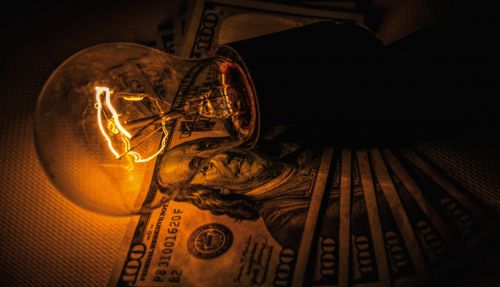All
Depreciation: Yesterday, Today and Tomorrow
by Joe Ciccarello, CPA, MST & Mike Koppel, CPA, MST, Gray, Gray & Gray, LLP

When you purchase new equipment or make improvements to your company’s facility, it is almost always best if you can take a tax deduction as soon as possible, preferably on your very next tax return. But that has not always been the case. Some capital investments were required to be depreciated over a lengthy period, often several years, providing just a small amount of tax relief annually.
Section 179 of the IRS code was created to help small businesses by allowing them to take a depreciation deduction for certain capital expenditures in one year, rather than depreciating them over a longer period of time. It has been an important tool for many businesses.
However, for several years, businesses have faced uncertainty regarding the amount of immediate expensing and bonus depreciation that was available. Congress usually waited until late in the year before addressing this uncertainty, or even waiting until the following year and making the changes retroactive. Businesses and their advisors never really knew the rules under which they would be playing.
Now, the “Protecting Americans from Tax Hikes Act of 2015” (PATH), which became law in December, has finally provided some of the certainty and consistency businesses have long sought. Here are the highlights of PATH that are most likely to affect companies in the oilheat and propane industry.
• The $500,000 expensing limit (with a phase-out beginning at $2 million) has been made retroactive for all of 2015 and made permanent. Hooray!
• In order for these amounts to truly remain effective permanently, Congress made the limits indexed for inflation beginning in 2016.
• Under prior tax law, businesses could annually treat up to $250,000 of “qualified real property” as qualifying for Section 179. PATH retroactively reinstates this $250,000 limit for 2015, and removes the limit entirely for tax years beginning after 2015.
• In the past air conditioning and heating units generally did not qualify for Section 179 treatment. But PATH has removed this limitation, effective for years beginning after 2015. Not an important feature for your business, but very good news for your commercial customers who are considering installing new heating and cooling systems.
Bonus Depreciation
PATH reinstated bonus depreciation retroactively and extend it for the next five years. A business will be able to depreciate 50 percent of the cost of qualified new assets acquired and put in service during 2015, 2016 and 2017. However, the percentage of allowed bonus depreciation will decrease by $10,000 a year beginning in 2018.
It is important to remember that not all assets qualify for both Section 179 and bonus depreciation treatment. The most significant difference is that bonus depreciation only applies to new assets, while Section 179 applies to the purchase either new or used assets. If you add a brand new delivery truck this year you may be able to use the 50 percent bonus depreciation. But purchasing a used truck would fall under Section 179 expensing, using up a portion of the $500,000 limit.
Repair or Capitalize?
The depreciation deduction is further complicated because of new “repair regulations” issued by the IRS in 2015. The new repair regulation requires that a decision be made whether an expenditure is a repair (which can be expensed) or an asset (which is the subject to the depreciation rules). The new rules are complex and beyond the scope of this article. However, the one thing that all businesses should have is a written capitalization policy. If you do not have a written capitalization policy, contact our tax department, and we can assist you.
Reduced Capitalization for Remodeling a Qualified Building
After years of negotiating with various business groups the IRS issued a new rule (Revenue Procedure 2015-56, if you need to know) that allows certain qualified businesses to capitalize just 25 percent of the cost of “refresh/remodel” expenditures. It appears that this includes upgrades of c-stores, as the allowable types of projects include maintaining a contemporary appearance, making the building more efficient, conforming to current building standards, or standardizing the consumer experience across multiple locations.
Conclusion
The Protecting Americans from Tax Hikes Act of 2015 has provided a level of certainty with regard to Section 179 and bonus depreciation. Unfortunately, there are other tax provisions that complicate the situation. And always remember, while several provisions have been made “permanent” or have been extended, Congress always has the option of passing legislation that can change them.
This article provides an overview of tax provisions that are very complicated. It is important to recognize the complexity of determining if an expenditure can be expensed or if it must be capitalized and possibly depreciated. We strongly recommend you discuss these issues with qualified a tax adviser, or contact our tax department at 781-407-0300.
Joe Ciccarello, CPA, MST is the Managing Partner, and Mike Koppel is a retired partner at Gray, Gray & Gray, LLP Certified Public Accountants (www.ggg.cpas.com)
Related Posts
 8 Strategies for Effective Wealth Transfer in a Business Succession
8 Strategies for Effective Wealth Transfer in a Business Succession
Posted on June 16, 2025
 What Do Drivers and Technicians Want?
What Do Drivers and Technicians Want?
Posted on May 14, 2025
 Long-Term Demand and Equipment Investments
Long-Term Demand and Equipment Investments
Posted on May 13, 2025
 Show Me the Money
Show Me the Money
Posted on April 28, 2025
Enter your email to receive important news and article updates.
